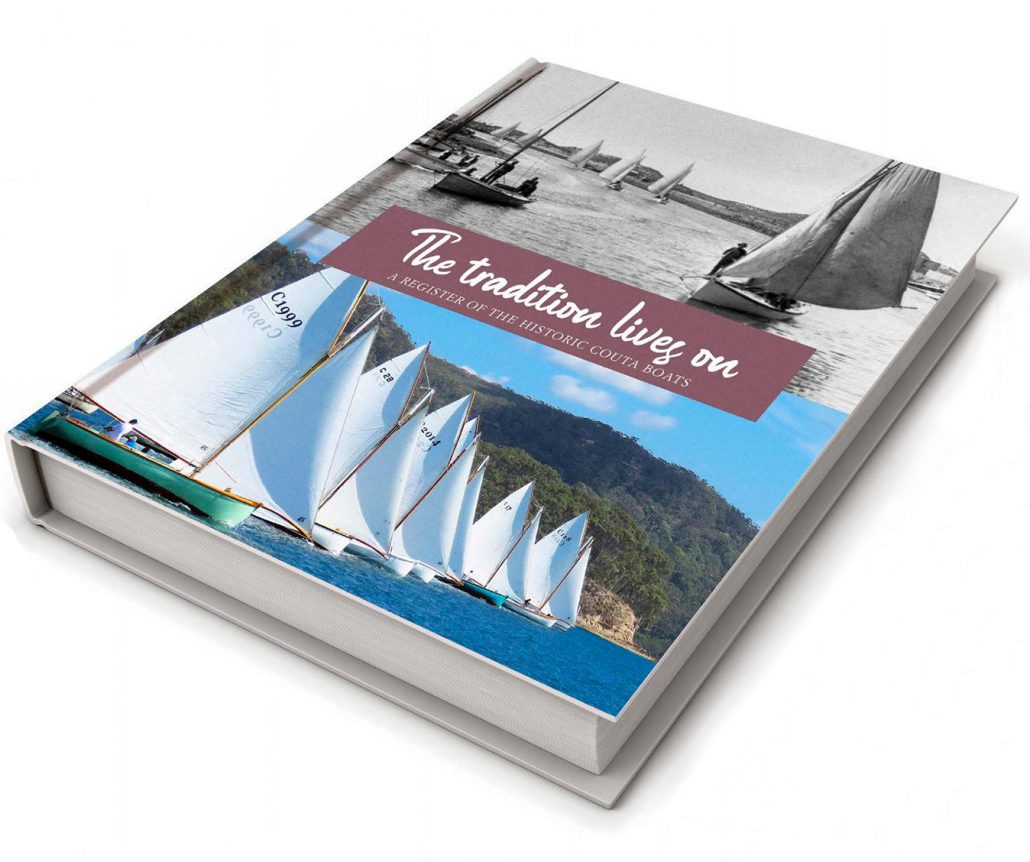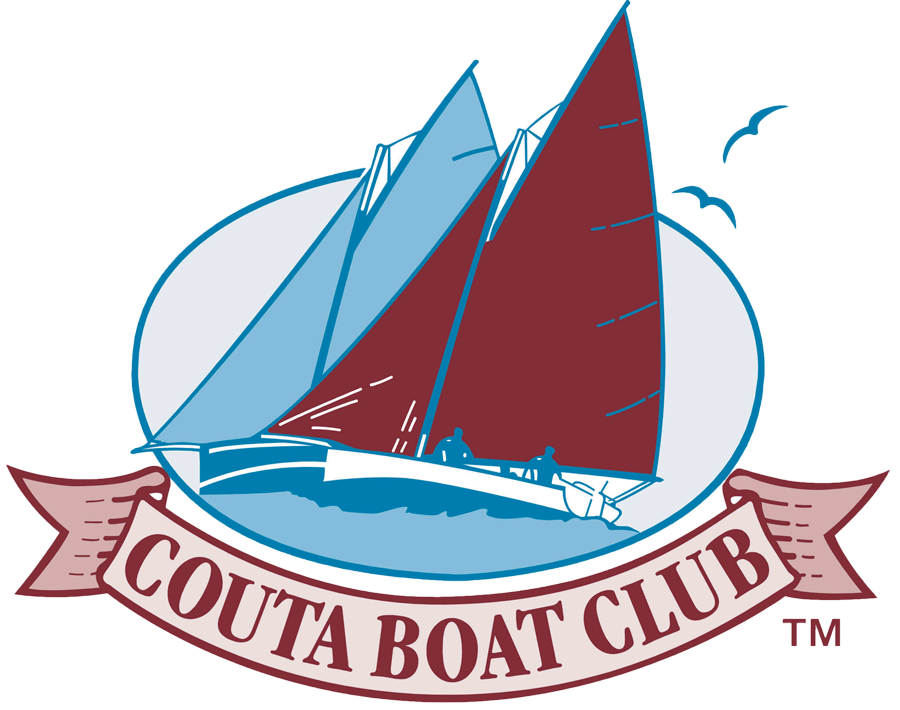
The profiles listed in this Register have been documented from the stories and photos contributed by custodians and others who willingly shared information. Readers who have additional information about the history of any Couta Boat are invited to forward it to couta_profile@coutaboat.com.au so that it can be added to the Register.
C. Blunt, Boatbuilder
Planking: New Zealand Kauri,
Trims, Keel and Panelling : Western Australian Jarrah
Tom Tucker’s Custodianship: 1946 – 1948
Nymphaea was built by C. Blunt Boatbuilder in Williamstown for Mr Tom Tucker in 1946, for the sum of £375. She was called Annie Amelia. Very little is known about the vessel’s history or owner for these first two years.
Charlie Williamson’s Custodianship: 1948 – 1973
In 1948, Nymphaea was purchased by cray fishermen Charles (Charlie) Williamson and his son Ken from Port MacDonnell, South Australia. They collected the boat from C. Blunt Boatbuilder’s yard in Geelong. Ken said the vessel was in ‘brand new’ condition and was un-named so his father called it ‘Nymphaea’ which is the botanical name for all water lilies (his father loved plants).
Prior to taking delivery, they had small bulwarks fitted by C Blunt Boatbuilder to hold the cray pots on board, and to also handle the heavy seas in the Great Southern Ocean giving it more freeboard. A small cabin was also fitted to give the crew some protection. Unusually for a boat this size not intended for netting, she has a canoe shaped stern and was cutter rigged, flying an inner jib off the stem post. The original engine was a Chev 4 petrol engine (ex-car engine). Later they fitted a Petter 18 hp diesel and much later a Lister 28 hp 4-cylinder air cooled diesel. They used the gaff sails a lot in the early days especially with the high cost of petrol following the war.
The Williamsons had a 65 pot licence in 1969, and prior to that date there was no limit on the number of pots; you could fish as many as the boat would carry. They used the centreboard when pulling pots to steady the boat and stop it rolling from side to side. Pots were originally pulled by hand through a small opening in the bulwarks on the starboard side. The hull had batons on the outside to protect it from damage as the pots were being pulled aboard. Later, Ken made a pot winch from part of a truck differential which was driven by belts from the engine. This made cray fishing a lot easier especially on their hands as fishermen in those days often didn’t wear gloves.
Crayfish were plentiful in the 1950s and 1960s, in close, up and down the coast. When they declined in numbers, fishermen travelled out to the Continental Shelf. As the Williamson’s licence was classed as a South Licence, they could fish between Longitude 141 to 129 degrees East. Annual licence fees in 1970 were $4.
The original registration number was L.O.Y. ‘L’ being the digit that all South Australian commercial fishing boat registration numbers started with. All the Port MacDonnell fishing fleet were kept on swing moorings next to the pier and at the end of the cray season, were pulled out of the water via a small slipway onto a large corner block of land at the corner of Sea Parade and Charles Street opposite the Customs House, for their annual maintenance.
The original mast is today at Port MacDonnell Bowling Club, Elizabeth Street, as one of their flag poles.
Ken sold Nymphaea in 1973 as he bought a newer, faster semi-planning hull fibreglass boat which he regretted as the old timber boat was a better sea boat, he declared. Ken Williamson passed away in April 2016, aged 86.
Custodian: David Coyle; 1973 – Present
The vessel was purchased by David Coyle 1973 and was kept in the Mordialloc Creek for approximately two years before he removed it from the water for a keel-up restoration. The vessel has been moved three times each time being housed in a purpose built shed.
Over the next 40 plus years, Nymphaea was completely rebuilt by David who was an experienced marine engineer and who has achieved the highest possible standard. David meticulously rebuilt and fitted a cabin to this gaff cutter to turn it in to a unique one-of-a-kind sailing vessel.
The vessel is planked in New Zealand Kauri on New Zealand Kauri frames and all ribs are original. Renowned boat builder Jack Gutierrez made a new rudder built of African Mahogany. All trims, keel and panelling are Western Australian Jarrah. All new keel bolts are copper with handmade bronze nuts; the fastenings throughout are either gun metal or copper. All wooden blocks are handmade by David with sheaves hand-turned. All nonferrous fittings were cast in bronze to David’s design and carry the vessel’s name in the casting, and were machined to exacting standards. The interior has been rebuilt and presents in classical style of times past, and all fittings and finishes are of superb quality. The engine is a Volvo Penta MD17C 35 hp marine diesel which is an older style of diesel engine which was completely rebuilt by David.
David has been conscious of all safety aspects of the vessel during the massive restoration. All open deck areas are protected by bulwarks which are topped by a lifeline on bronze stanchions and the large comfortable cockpit is fully self-draining. The new spars have been built of full length Oregon and these include mast, gaff, boom, jackyard and jibboom and all rigging is of quality 316 stainless steel wire. Sails are hand made by R.B. Stevens in Nova Scotia.
Nymphaea was re-launched at Martha Cove, Safety Beach on Friday 13th November 2015, and is registered on Australian Historic Vessel Registry No. HV000715.
In March 2016, Nymphaea attended the Wooden Boat Festival of Geelong and was awarded The Lin & Larry Pardey, Talesin Trophy for Wooden Yachts (Under 30ft) and most deserving of recognition.
David sailed Nymphaea to Hobart for the Australian Wooden Boat Festival (AWBF) in 2019. Here is his account:
We took 9 days to travel to Hobart including a lay day at Erith Island, West Cove while waiting for the 30 knot winds to abate. We only sailed during the daytime anchoring at night at San Remo, Erith Island, Trouser Bay, Thunder and Lighting Bay, St Helens Island, Crockett Bay, Boomer Island, Rat Bay and Hobart. One of the highlights of the trip to Hobart was to awake at Crockett Bay (Schouten Passage) to find the Tall Ships, Bark Endeavour, James Craig and the Sorell Larsen had sailed in overnight. As we sailed around them the Bark Endeavour fired a gun salute. After the festival we stayed the first night at King George Sound with winds up to 50 knots. We motored through Dunalley Passage for Maria Island for the next night. Our following nights were at Wine Glass Bay, Seaton Cove, and Lady Barron where we refuelled. From Lady Barron (Flinders Island) we sailed 39 hours straight through Port Phillip Heads and to our home port of Martha Cove. Total trip was 20 days including 4 days at the Australian Wooden Boat Festival. Total distance travelled was 972 nautical miles at an average speed of 5.6 knots.

